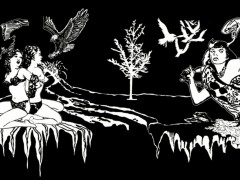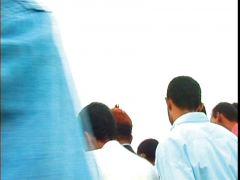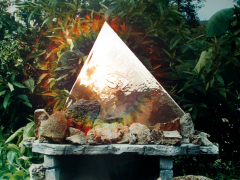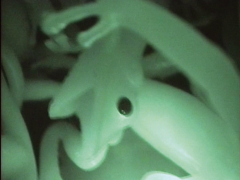Le bruit des choses qui tombent
Le bruit des choses qui tombent (The sound of things falling)*
Curator: Albertine de Galbert, with Elena Lespes Muñoz
FRAC PACA (Marseille, France)
//from December 2, 2017 to February 18, 2018//
« There is a faltering scream, or something that sounds like a scream. There is a sound that I cannot and never have been able to identify: a sound that is not human, or is more than human, the sound of lives being extinguished but also the sound of mate-rial things breaking. It’s the sound of things falling from on high, an interrupted and somehow also eternal sound, a sound that didn’t ever end, that kept ringing in my head from that very afternoon and still shows no sign of wanting to leave it. »
Juan Gabriel Vásquez
« Better to have your nightmares on your walls than in your head. »
Daddy
As part of the France-Colombia year celebrated in France in 2017, the Frac presents an exhibition which brings together works of fifteen Colombian artists and pieces selected from the Frac’s permanent collection.
The subject is fear. This fundamental and timeless affect that no human being can escape has a blinding power. As Stephen King wrote, it can plunge us into
“complete darkness” and leave us “as helpless as children unable to find the light switch.”
As a primary manifestation of our relation to the world, fear is an active element in its construction, as well as in shaping our inner selves. Its ritual and initiatory role in children’s development makes it a driving force in our experience and acquisition of knowledge of the world. It also represents a threshold that must be crossed so that it is finally resolved and dissipated. Fear is at the root of our survival instinct and ability to act.
What are we afraid of? What are the objects and effects of fear? How can it be represented? Further, how can it be used? What does fear say about us, about our relationship to the other and the real? Darkness, shapelessness, void, collapse, fragmentation, separation, suffocation, intrusion… primal fears violently reactivated in a world suffering from its inability to take a definite shape, a liquid world, to borrow sociologist Zygmunt Bauman’s metaphor, where human ties are weakened.
Some people take advantage of this fragility and transform fear into a powerful manipulative tool, a technique, using its mechanisms to impose their authority in the public and private spheres. As fear becomes a public issue and the source of a social order based on the affective modulation of our daily lives – a phenomenon discussed by Patrick Boucheron and Corey Robin in a recent dialogue – it seems necessary to also point out the importance and foundatio-nal part this emotion plays in the process of our emancipation as individuals. How to take catastrophe by surprise? How not to repress fear, but instead turn a sterile, paralyzing state of mind into a reflexive element unleashing action, reaching out and knowledge? This exhibition at the Frac revolves around these notions: the objects of fear, the mechanisms of its intrumentalization, and the means to conquer it. Paintings, sculptures, installations (some site-specific for this show), photos and videos will dialogue with one another over the museum’s two floors and in its auditorium. Like a provocation in the face of the unrepresentability of anxiety and the shapelessness always associated with fear, art opens up a space for representation, interpretation and speaking out.
Artists:
Absalon | Ever Astudillo | Alberto Baraya | Jean Bellissen | Christophe Berdaguer et Marie Péjus | Bruno Botella | Pedro Cabrita Reis | Santiago Cárdenas | Arnaud Claass | Tony Cragg | Francis Gomila | Beatriz González | Rodney Graham | Laurent Grasso | Leonardo David Herrera | Fabrice Hyber | Paulo Licona | Norman Mejía | Ana María Millán | Oscar Muñoz | Alex Rodríguez | Miguel Ángel Rojas | María Isabel Rueda | Doris Salcedo | Edwin Sánchez | Jean-Luc Verna | Martin Walde
*This exhibition takes it’s title from a novel by the Colombian writer Juan Gabriel Vásquez published in 2011.
This post is also available in: Spanish

 Home
Home



